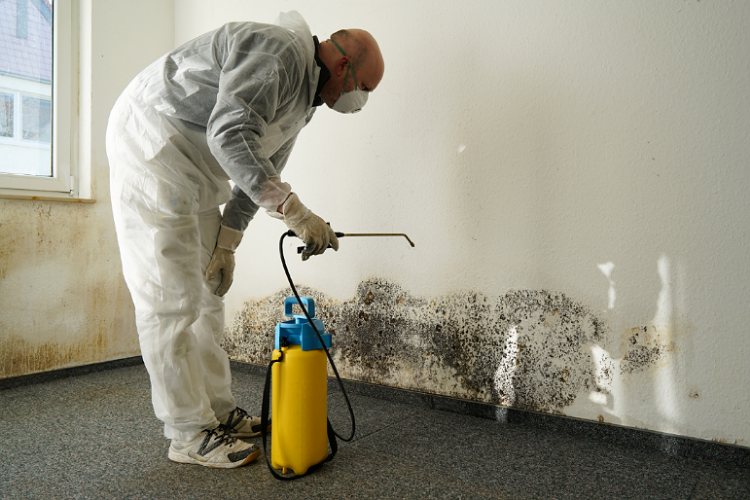Disasters strike unexpectedly, leaving behind a trail of destruction that can be overwhelming for property owners. Whether it’s water damage from a burst pipe, fire damage from an electrical fault, or mold infestation due to prolonged moisture, the aftermath often requires professional restoration to return the property to its original condition. Understanding the property restoration process can help homeowners and business owners navigate the chaos with clarity and confidence.
Initial Assessment and Damage Inspection
The first step in any restoration process is a thorough assessment of the damage. Restoration professionals like Price Brothers restoration begin by inspecting the property to determine the extent and type of damage. In the case of water damage, they identify the source of the water intrusion—whether it’s clean water from a broken pipe, gray water from appliances, or black water from sewage. For fire damage, the inspection includes evaluating structural integrity, smoke penetration, and soot residue. Mold damage assessments focus on identifying the affected areas and the underlying moisture source that allowed mold to thrive.
This initial evaluation is critical not only for planning the restoration strategy but also for insurance purposes. Detailed documentation, including photographs and written reports, is typically compiled to support claims and ensure transparency throughout the process.
Mitigation and Containment
Once the damage is assessed, the next phase involves mitigating further harm and containing the affected areas. For water damage, this means stopping the water source and extracting standing water using industrial-grade pumps and vacuums. Dehumidifiers and air movers are deployed to dry out the space and prevent mold growth. In fire damage scenarios, professionals board up windows, tarp roofs, and secure the property to prevent unauthorized access and additional damage from weather exposure.
Mold removal or remediation requires isolating the contaminated zones to prevent spores from spreading to unaffected areas. This frequently entails employing negative air pressure equipment and plastic sheeting to block off rooms. Containment is a crucial step that ensures the safety of both the restoration team and the occupants of the property.
Cleaning and Debris Removal
After containment, the focus shifts to cleaning and removing debris. If water-damaged items like drywall, insulation, and carpets cannot be saved, they may need to be thrown out. Fire damage cleanup involves removing charred materials, soot, and smoke residue from surfaces. Specialized cleaning agents and techniques are used to eliminate odors and restore air quality.
Mold-infested materials are carefully removed and disposed of according to environmental regulations. Surfaces are scrubbed with antimicrobial treatments to kill remaining spores and prevent recurrence. In all cases, restoration teams work meticulously to ensure that the property is free from contaminants and safe for habitation.
Structural Repairs and Reconstruction
Once the property is cleaned and stabilized, the reconstruction phase begins. This can range from minor repairs such as replacing drywall and repainting walls to major structural work like rebuilding entire sections of a home or commercial building. Restoration professionals coordinate with contractors, electricians, plumbers, and other specialists to ensure that repairs meet building codes and safety standards.
In fire damage cases, structural integrity is a major concern. Beams, joists, and load-bearing walls may need to be reinforced or replaced. Water damage can compromise foundations and flooring, requiring extensive repairs. Mold damage, if left unchecked, can deteriorate wood and drywall, necessitating reconstruction of affected areas.
Throughout this phase, communication between the restoration company and the property owner is key. Timelines, budgets, and progress updates are shared regularly to keep everyone informed and aligned.
Final Inspection and Prevention Measures
Before the restoration process is considered complete, a final inspection is conducted to ensure that all repairs have been properly executed and that the property is safe. Restoration professionals check for lingering moisture, structural soundness, and air quality. In mold remediation, air sampling may be performed to confirm that spore levels are within acceptable limits.
Preventive measures are also discussed to help property owners avoid future damage. This might include installing sump pumps, improving drainage systems, upgrading electrical wiring, or using mold-resistant building materials. Education plays a vital role in empowering owners to protect their investments and respond swiftly to potential threats.
Insurance Coordination and Documentation
Navigating insurance claims can be one of the most stressful aspects of property restoration. Fortunately, many restoration companies assist with this process by providing detailed documentation of the damage, repairs, and associated costs. They work directly with insurance adjusters to ensure that claims are processed efficiently and fairly.
Having a professional advocate during this phase can make a significant difference in the outcome of a claim. It ensures that all necessary paperwork is submitted, that coverage is maximized, and that the property owner receives the support they need to recover financially.
Emotional Recovery and Support
Beyond the physical damage, disasters can take a toll on emotional well-being. The loss of personal belongings, disruption of daily life, and uncertainty about the future can be deeply distressing. Restoration professionals understand this and often provide compassionate support throughout the process. Some companies even offer referrals to counseling services or community resources to help families cope.
Restoring a property is more than just rebuilding walls—it’s about restoring peace of mind. Knowing what to expect during the restoration process can alleviate anxiety and empower property owners to take proactive steps toward recovery.
Conclusion: Rebuilding with Confidence
Water, fire, and mold damage can be devastating, but with the right restoration team and a clear understanding of the process, recovery is possible. From initial assessment to final inspection, each phase plays a vital role in restoring safety, functionality, and comfort. By choosing eco-conscious, experienced professionals and staying informed, property owners can rebuild not just their homes, but their lives—with confidence and resilience.

